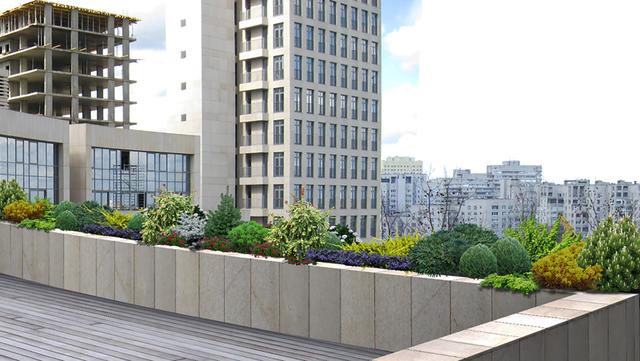
Increase the Lifespan of Your Shrubs
Formal vs. Seasonal Rejuvenation Pruning
The debate between frequent formal shearing of shrubs versus seasonal rejuvenation pruning can get as hot as the summer sun but fans of shearing diminish as they come to understand the numerous health, environmental and aesthetic benefits of seasonal pruning. You probably see examples of both practices every day but may not be familiar with the specifics.

Health Benefits
Shearing is detrimental to the long-term health of a shrub and eventually may lead to its death but proper seasonal pruning can enhance a plant’s health over time. Shearing stimulates growth of a twiggy outer layer that shades the interior of the plant and becomes full of dead wood and leaves. The shaded interior is more prone to insect attack, dieback and damage from frost or drought. Because the outermost shell is woody rather than leafy, shearing also inhibits the shrub’s ability to produce nutrients through photosynthesis. Fighting off attack and disease while working harder to produce nutrients depletes the plant of energy and causes sheared shrubs to die faster than rejuvenated shrubs. The natural growth pattern of a rejuvenated shrub allows light and air to reach the plant’s interior reducing dead wood and disease and encouraging nutrient absorption.
Environmental Benefits
Frequent shearing promotes rapid growth and requires constant upkeep to maintain a desirable shape. This constant upkeep can create an environmental strain since gas-powered hedge trimmers and blowers necessary to clean up debris generate exhaust fumes and emissions, more green waste must be hauled off site requiring additional trips to the landfill, and the unnecessary waste takes up additional landfill space. Sheared shrubs also burn more energy requiring considerably more water to stay alive. Rejuvenating instead of shearing uses less gasoline and irrigation water, generates less air pollution and requires fewer trips to landfills.
Aesthetic Benefits

As shrubs are frequently sheared, it becomes difficult to achieve a consistent shear on every shrub resulting in many different shapes and looks. Frequently sheared shrubs will also appear inconsistent as they try to flower (see picture). Over time, the constant shearing will show unsightly dead wood on the shrub. Since most landscapes are designed by a landscape architect taking into consideration many different physical and aesthetic factors, formal pruning sacrifices the vision that the architect originally intended. The natural shape of seasonal pruning not only increases the lifespan of shrubs but it also provides a look that is more consistent with current landscape design trends.
-
Formal Pruning/Shearing

Seasonal Rejuvenation Pruning Also known as shearing; consists of shaping or shearing shrubs every month during the summer growing season. Sheared shrubs will look mostly green year round with minimal or inconsistent flowering. Frequent shearing is a practice that was started to remedy the problem of shrubs outgrowing their allotted space but became popular as many people like the tight, “manicured” look.
-
Seasonal Rejuvenation Pruning
Consists of pruning or rejuvenating shrubs based on the individual plant species’ natural flowering cycle. Rejuvenative pruning is completed after a plant has flowered. The frequency of pruning depends on the planting density of the landscape; usually every 1-3 years. After the flowering cycle is complete, pruning is accomplished by reducing the crown of the plant by approximately 30-50% and allowing it to grow back naturally during the next growing season. Some plants need to be cut back further, almost to the ground.
Let BrightView Landscape Services Help You
BrightView takes pride in the landscapes we create for our clients. Starting with the design phase, we aim to bring your vision to life choosing the right plantings for your environment.
The state of your landscape speaks volumes about your property and therefore needs to be properly maintained. It will be important to balance the visual appeal of your property with the cost to sustain and protect it.
You can benefit from a comprehensive landscape maintenance plan designed to meet your needs and exceed your expectations, no matter the environment or season.




